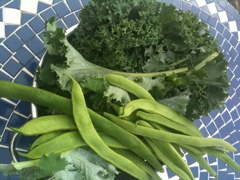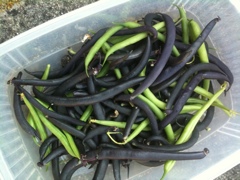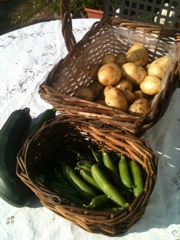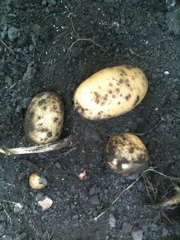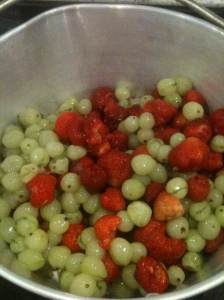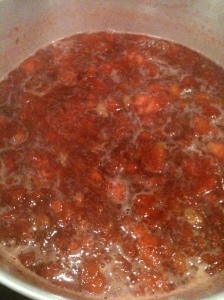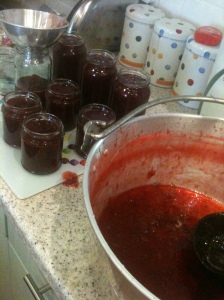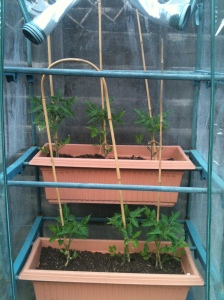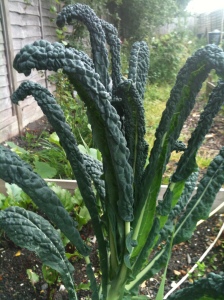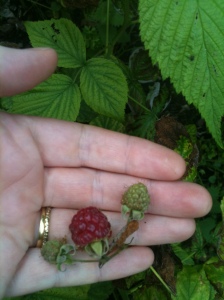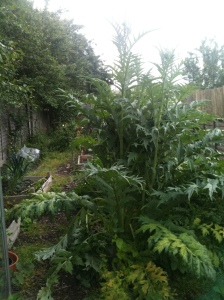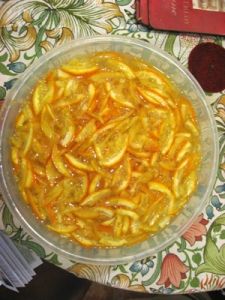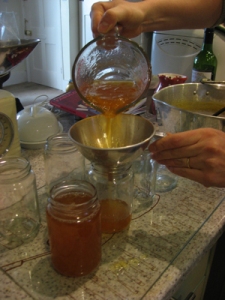
A lovely fieldfare who visited this week
Last weekend we sat down and had a proper think about our plans, committing our thoughts to paper. The first thing I recorded was the weather as I would like to keep a record of this, to enable me to see trends and how it changes through the years. Then I began to sort through the old seed packets we had leftover in the drawer from last year. Seeds do last a while, so don’t throw away your packets until you are sure they are no longer of use. Even after the recommended sow by date you could still give them a try. However if you are after more reliable results, it may be better to start afresh. We were quite pleasantly surprised that we still have ample seeds to grow the main, staple varieties of vegetables this year, perhaps with a few new and unusual ones purchased from a reliable supplier.
The other thing we began to have a think about is fruit. Last year we concentrated on growing mainly vegetables, to give ourselves a chance to concentrate on one area of growing properly, adding a new subject each year. So this year (along with obtaining some chickens), it will be fruit growing. Looking through the D T Brown catalogue we made a list of the ones we would like to try, then made a more realistic list based on the space we have! I would love to ultimately grow the kind of fruit you don’t normally see in shops such as mulberry and medlar, but these trees can grow quite large, not practical at the moment in our garden. So we opted for a range of currants instead (red, white and black) along with some of the more hedgerow varieties (indespensible in preserving), and will try sloes and crab apples. Quince is the only other fruit we will try. I am intrigued by this fruit and hear preserves made from it are perfect with cheese. Should be a lovely addition to my Christmas gift hampers for friends and family this year!
The next thing to do was work out the areas in our garden in which we would grow everything. Our raised beds are in place from last year, so it is just a case of rotating the crops around. Brassicas will go in the onion & pea bed from last year, then new onions and peas in the old roots bed. This years roots will go in the old potato bed, and the last bed which currently has asparagus growing in it, will have the addition of some strawberries this year. We’ve made much more space for the main staple crops like potatoes and onions too this year, as found our 2009 crops of these didn’t last very long once harvested! A few other marked areas in the garden will have broad beans, french beans, squashes, leeks and edible/medicinal flowers. Raspberries complete the picture next to the leek bed.
So from all that, a list was made to send to the most suitable seed supplier and here is what we will order:
purple sprouting broccolli, oregano, chard, kohl rabi, purple tomatoes, coriander, sea kale, yellow beetroot, pumpkin, red chicory, spring onions, purple french beans, thyme, garlic, calendula, nasturtium, clary sage, borage, currants, crab apple, sloe, quince, strawberries
Not bad to be going on with!
Lastly we made a plan for the growing year, of what we need to do and when. Here are our jobs for this month:
1. Dig over ground ready for growing. Dig in green manures sown last autumn and dig over new areas for growth. Add in soil improver such as home made compost, chicken manure etc.
2. Clean pots, seed trays and greenhouse thoroughly
3. Fix broken panes of glass in greenhouse
4. Weatherproof sheds
5. Prune old fruit bushes and woody plants such as rosemary, lavender
6. Order seeds and supplies such as fleece, netting etc.
Well, I think that is quite enough for now, so better get started! I will leave you with an image of our raised beds in the snow, and above is a pictre of a little fieldfare who ventured into the garden this week looking for berries. These are normally found in the hedgerows but have been visiting lots of gardens in the recent cold snap looking for extra food. We were very pleased to have been able to help them 🙂

Raised beds in the snow

